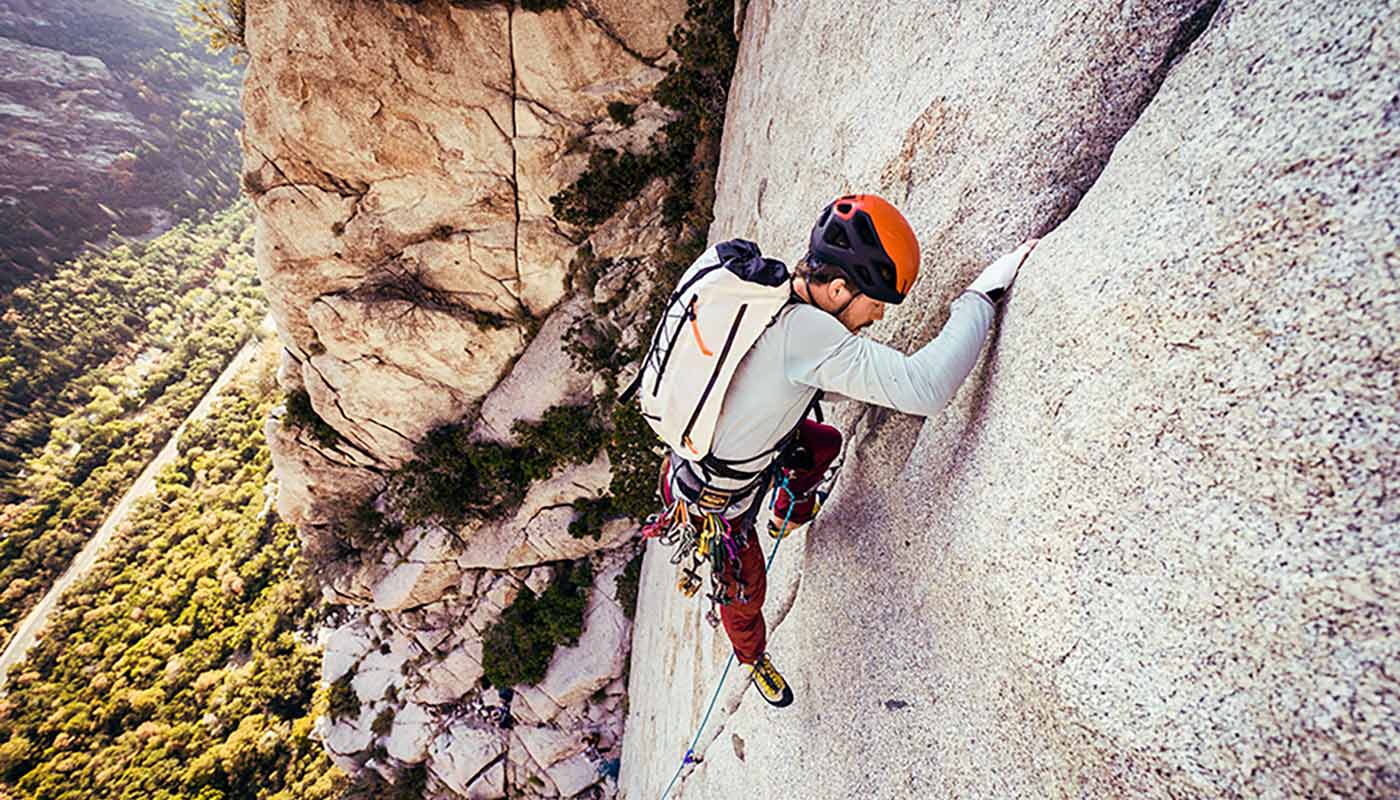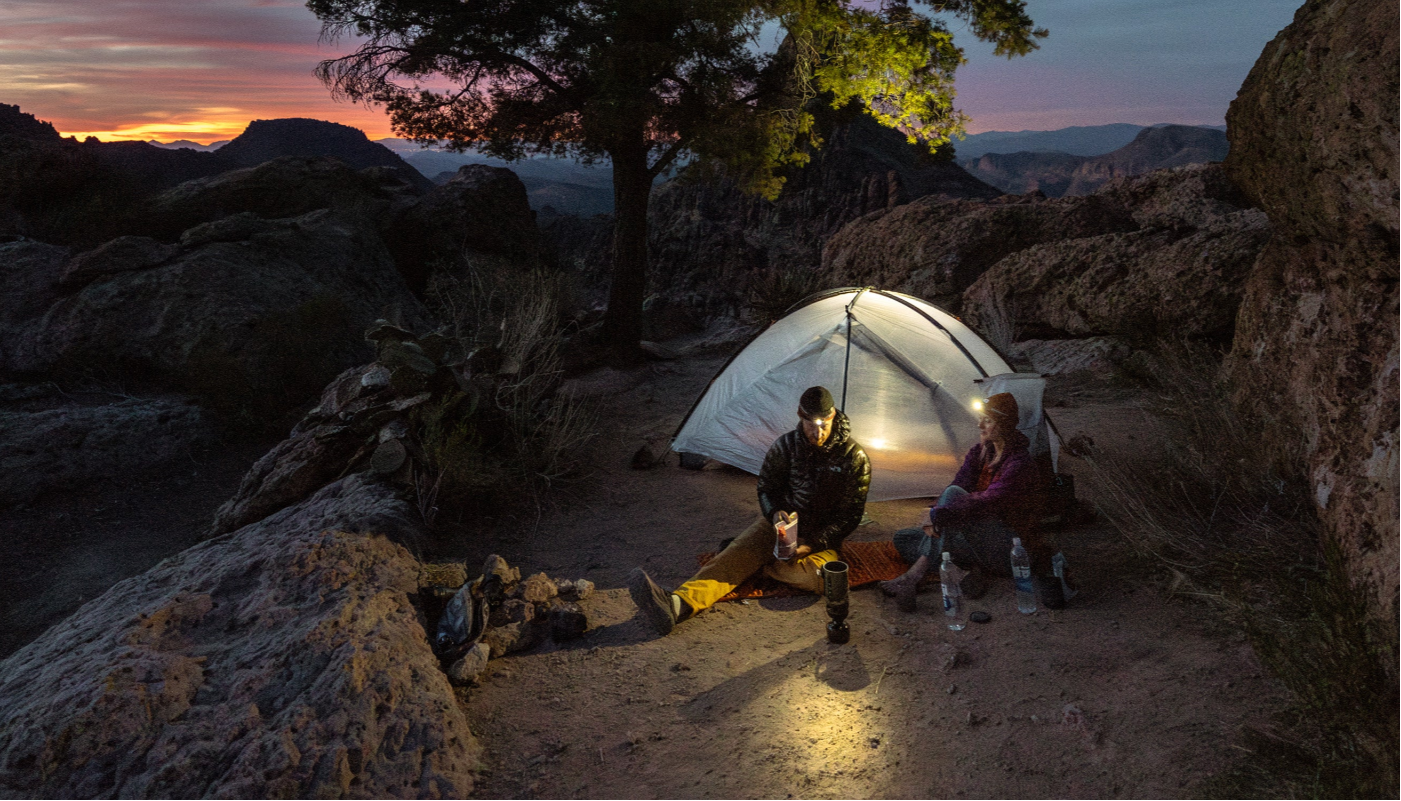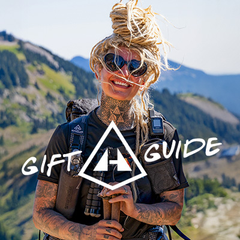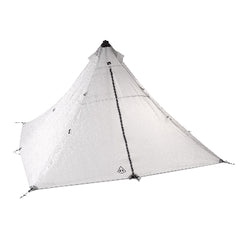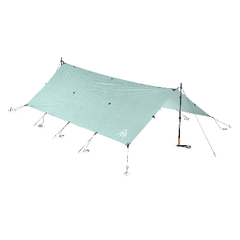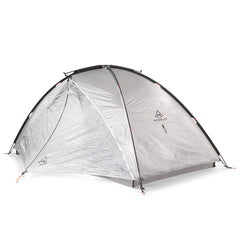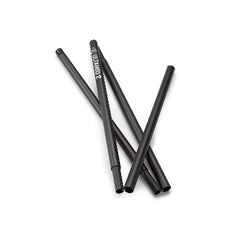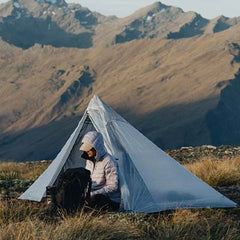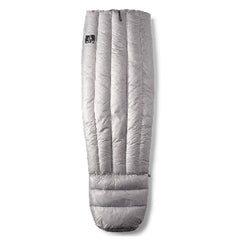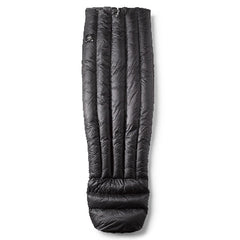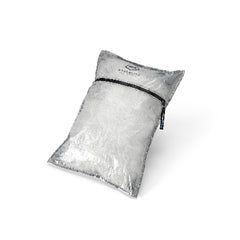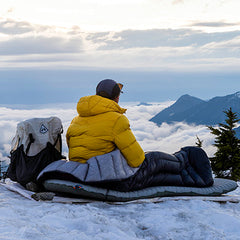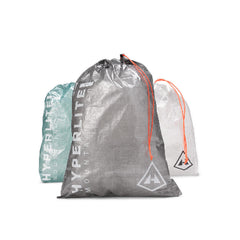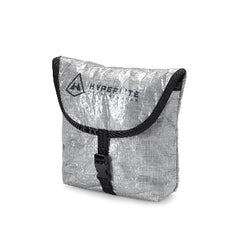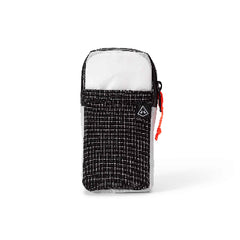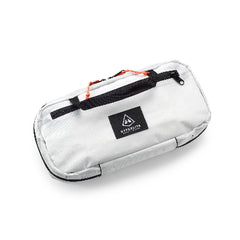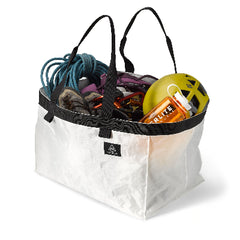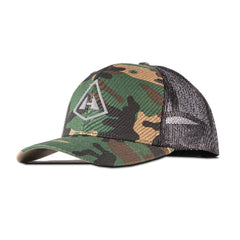Words and Photos by Luke Stetson @luke.stetson
 I have always heard that Peru is a beautiful country with breathtaking scenery, rich culture, and kind people, so back in the spring of 2023, when planning a trip with a friend, Peru sounded like a great option. We ended up trekking the Choquequirao Route to Machu Picchu, then visited Manu National Park in the Amazon Rainforest. We saw some of the most breathtaking mountain scenery on earth, met amazing people, and even saw a jaguar in the rainforest, but that's a story for another time. Fast forward a year, and while in between jobs, I was planning another big trip, one that I'd be on for two months. I've always wanted to go to Patagonia, so that's what came to mind first. But where else would I go? Peru once again sparked my interest, and I realized traveling to a few countries in South America would work great. I would start by visiting Peru, joined by my good friend Bailey, for a little over two weeks in November. Then I would travel solo to Santiago, Chile, for about a week, followed by almost three weeks in Argentine Patagonia. Finally, I would fly to Rio de Janeiro for a week, then all the way back to my home in Maine for Christmas. After months of planning, I finally had a trip put together that included plenty of backpacking in the mountains, with some city life sprinkled in for cultural experiences.
I have always heard that Peru is a beautiful country with breathtaking scenery, rich culture, and kind people, so back in the spring of 2023, when planning a trip with a friend, Peru sounded like a great option. We ended up trekking the Choquequirao Route to Machu Picchu, then visited Manu National Park in the Amazon Rainforest. We saw some of the most breathtaking mountain scenery on earth, met amazing people, and even saw a jaguar in the rainforest, but that's a story for another time. Fast forward a year, and while in between jobs, I was planning another big trip, one that I'd be on for two months. I've always wanted to go to Patagonia, so that's what came to mind first. But where else would I go? Peru once again sparked my interest, and I realized traveling to a few countries in South America would work great. I would start by visiting Peru, joined by my good friend Bailey, for a little over two weeks in November. Then I would travel solo to Santiago, Chile, for about a week, followed by almost three weeks in Argentine Patagonia. Finally, I would fly to Rio de Janeiro for a week, then all the way back to my home in Maine for Christmas. After months of planning, I finally had a trip put together that included plenty of backpacking in the mountains, with some city life sprinkled in for cultural experiences.
THE PLAN
The plan for Peru was to fly into Cusco and explore the city a bit before backpacking the Salkantay trek. We would then go back to Cusco to rest and resupply for a few days before getting after it again to do a multi-day trek around the sacred mountain of Ausangate.
 THE GEAR LIST
THE GEAR LIST
Hyperlite Southwest 55 (My friend was using the Southwest 40L)
Sleeping bag, air mattress, inflatable pillow
Two-person tent
Backpacking stove with propane, a lighter, and a 750 ML cup + spoon
Water bottles and filter
Trekking poles
Wool base layers + thin hat and gloves
Toiletries, first aid, sunscreen
Baseball hat and sunglasses
Emergency bivy
Headlamp with extra batteries
Hiking boots (Normally I'd go with trail runners but I didn't want my feet getting cold at higher altitude)
Camera, batteries, portable charger, tripod
A few days' worth of food
Rain jacket
Insulated jacket
Fleece
Minimal clothes (pants, shirt, sun hoody and a few pairs of socks and underwear)
Stuff sacks to organize
Dry bag
Microfiber towel
GETTING ON TRAIL
Peru is a big country with lots of rugged mountain terrain, so getting anywhere can take a while. To get to the start of the Salkantay trek, we hitched a ride on a tour van that was taking people to the trailhead for a guided day hike. We ended up sitting in the back of the van and endured a four-hour ride with what felt like endless switchbacks, making us both extremely carsick. Once we eventually got to the start of the trail, we were excited to finally get out of the van and actually start the trek.
 DAY 1
DAY 1
Day one was a fairly low-mileage day but included some of the best views of the trip. To start, we hiked up to Laguna Humantay, where we saw lots of people who also came from Cusco but were only doing a day trip with a tour company. The thought of getting back in a van later that day made me in no way envious of them. We took in the views at the lake and eventually had it to ourselves once the tour guides rounded up their groups to go back to Cusco.
By late afternoon, we were closing in on our planned campsite location when Salkantay, which had been covered in clouds all day, finally revealed itself. We stood in awe, looking at the enormous peak while a herd of alpacas grazed nearby. We kept a steady pace on the wide mule trail, which seemed fairly easy compared to the steep, rocky/rooted trails we were used to back home in New England. We eventually made it to the open valley below Salkantay, where we pitched our tent in what seemed to be an old mule pen made of rock, which proved to be a great windblocker that night. It seemed that as soon as we started setting up the tent, the wind picked up and some of the tall peaks surrounding us disappeared into the clouds; not a good sign.

 In a matter of minutes, I could hear thunder in the distance and noticed it had started lightly sprinkling. Of course, all of this happened before we could cook dinner, so we started eating snacks in the tent, hoping the storm would quickly blow over. Well, that certainly didn't happen.
In a matter of minutes, I could hear thunder in the distance and noticed it had started lightly sprinkling. Of course, all of this happened before we could cook dinner, so we started eating snacks in the tent, hoping the storm would quickly blow over. Well, that certainly didn't happen.
The light rain turned into a hard downpour, and if that wasn't enough to make us both a little nervous, loud booms of thunder and lightning erupted through the valley we were in. We both sat in our sleeping bags, silent, just hoping we'd somehow stay dry and hopefully not get zapped by a bolt of lightning. Rain and wind shook the tent, and frequent bolts of lightning, hitting the summit of Salkantay, lit up the entire valley as if it were daytime. The thunder was so loud you could feel the bass of it vibrating your heart. In short, this was the worst thunderstorm I have ever experienced, and we had nothing more protecting us than a little tent, all while being alone beneath a 20,000-foot mountain–not a great situation to be in. Luckily, after hours of being awake in our sleeping bags, at the mercy of Mother Nature, the storm slightly slowed down, and we fell asleep.
DAY 2
The next morning, the air was still, and our tent was somehow completely dry. We both laughed at how terrifying the night was, and we were rewarded with beautiful views of Salkantay when the clouds lifted—definitely an unforgettable experience and a great reminder that nature is always in charge.
The sky quickly transitioned from overcast to blue and sunny as we filtered water and cooked a big breakfast. We once again stood in awe, looking up at the powerful Salkantay with fresh snow from the overnight storm. We eventually packed our bags and set out for the day's adventure, where we would hike over Salkantay Pass (15,190 feet/4,630 meters) and then start the descent into the cloud forest.



 After a full day of amazing views and about 12 miles, we made it to the village of Chaullay, where we found a hostel that served warm food and had a place for our tent. This was a nice way to end a long day on trail and a great contrast to the night before. It did, however, rain very hard that night as well.
After a full day of amazing views and about 12 miles, we made it to the village of Chaullay, where we found a hostel that served warm food and had a place for our tent. This was a nice way to end a long day on trail and a great contrast to the night before. It did, however, rain very hard that night as well.
 DAY 3
DAY 3
Day three consisted of walking the dirt road out of Chaullay and getting back on the trail, which resumed on a pretty gnarly cliffside next to a river. The trail and the road were on opposite sides of the river from one another, so once we started down the trail, there was no going back to the road. In hindsight, this was a horrible mistake because the trail ended up being completely washed out in one section. This forced us to scramble down a sketchy cliff made of loose rock in hopes of crossing the river to get back on the road. However, once we climbed down the cliff, it was apparent that the river was faster and deeper than it appeared from the trail above. So we then had to hike back up the extremely sketchy cliff and backtrack on the trail until we reached an also sketchy wooden bridge, crossed the river, hiked up a steep trail, and finally made it to the road on the other side of the river. Long story short: if you attempt this hike, walk the road or hitch a ride out of Chaullay because the trail is most likely washed out at some point. We ended up spending the night in another village called Lucmabamba, where we found a hostel with space for our tent but no warm meal this time; just really loud roosters.

 DAY 4
DAY 4
Day four was mostly just a big slog day trekking from the hostel in Lucmabamba to Aguas Calientes, which is the town below Machu Picchu. We walked past coffee farms and got our first views of Machu Picchu from afar at the Llactapata Archaeological Zone. We eventually got down to the river, which flows below Machu Picchu, and followed train tracks for a long way until we got to Aguas Calientes. As much as we love being in remote wilderness, Bailey and I both agreed that it was nice to be in town, where we had pizza, beer, and real beds to sleep on.
 DAY 5
DAY 5
Day five was the final day of our trek, which meant it was now time to see Machu Picchu.
Instead of taking a bus up to the park, we made the hike up the mountain from town. I would highly recommend this strategy because there was hardly anyone on the trail in the morning, and the old Incan stairs going up the mountain are extremely impressive. There were some low clouds in the morning that luckily cleared, giving us great views of Machu Picchu and the surrounding mountains. After a sunny morning spent in Machu Picchu, we hiked back into town to catch our train to Cusco, which officially wrapped up the trek.
 SIDE NOTE: One of my favorite features of Hyperlite backpacks is that they can roll up and compress to be very small. Our once large 55L and 40L bags made great day bags when rolled up, which is perfect because you are only allowed to bring small bags into Machu Picchu. This feature is also perfect for traveling because you can compress your backpacking bag to fit perfectly in the overhead compartment of a plane.
SIDE NOTE: One of my favorite features of Hyperlite backpacks is that they can roll up and compress to be very small. Our once large 55L and 40L bags made great day bags when rolled up, which is perfect because you are only allowed to bring small bags into Machu Picchu. This feature is also perfect for traveling because you can compress your backpacking bag to fit perfectly in the overhead compartment of a plane.
AUSANGATE
The original plan for Peru was to do the five-day Salkantay trek followed by a few days in Cusco to rest before doing the multi-day trek around the sacred mountain of Ausangate. Our plans changed, however, when we saw the forecast showing lots of rain and realized getting constantly rained on for multiple days at 14,000+ feet with nothing around for miles was probably not a good idea. So instead, we decided to stay a few extra days in Cusco and then spend three days and two nights in a hostel in the small village of Pacchanta, which is right below Ausangate. We knew we had made the right decision when it was pouring rain and 40 degrees F our entire first day in Pacchanta; luckily, we had a solid roof over our heads this time.
With an entire day wasted staying inside away from the nasty weather, our hopes of even seeing the mountain were starting to diminish when, on day two, we got lucky and woke up to the mountain being completely clear. We knew we might have a small weather window, so we packed up quickly and got on trail as soon as we could to do the Seite Lagunas day hike. We saw huge herds of alpacas, beautiful mountain streams, and the magnificent Ausangate right in front of us. Although we weren't backpacking around the mountain like we originally planned, our time viewing Ausangate from Pacchanta contained some of the best moments of the trip, and we stayed mostly dry.




 Now that I have been to Peru twice and been on many adventures in the country, I can confidently say it is a truly beautiful place that I highly recommend to anyone looking for a grand adventure. It is a place with unbelievably beautiful and vast wilderness, rich culture, and kind people. Each time I have visited Peru, I have left with so many unforgettable memories and the thought of when I can return again for the next adventure.
Now that I have been to Peru twice and been on many adventures in the country, I can confidently say it is a truly beautiful place that I highly recommend to anyone looking for a grand adventure. It is a place with unbelievably beautiful and vast wilderness, rich culture, and kind people. Each time I have visited Peru, I have left with so many unforgettable memories and the thought of when I can return again for the next adventure.
